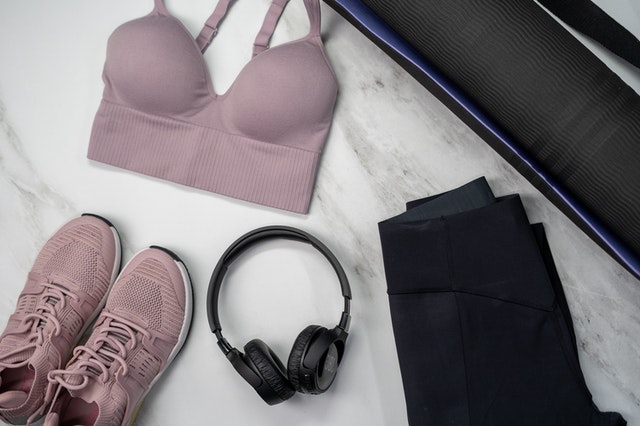

Does life feel like a stress factory? It turns out that the way to slow down stress is to rev up your gears. While it may seem counterproductive, doing more is the best stress-management technique if that “more” involves your workout. Yes, regular exercise is the stress-busting secret that everyone needs to remember when they feel tense, anxious and overwhelmed. Do you need a stress escape plan? Take a look at the secret to managing stress with exercise.
Most of us know how good that post-workout glow feels. It can feel like we’ve discovered the secret switch for suddenly feeling more energized, confident and motivated. However, we can just as easily forget how good working out feels once our schedules fill up with work commitments, home-life commitments and distractions. Once you know the science behind why working out leaves you feeling like you’re on top of the world, it’s pretty hard to skip a workout.
It’s all thanks to endorphins. Endorphins are your body’s feel-good neurotransmitters. You’ve definitely already met endorphins if you’ve ever worked out hard, went for a run or simply danced around! Endorphins are natural analgesics that help to diminish pain. Your body releases them during workouts because it knows that you’re “feeling the burn.”
Because endorphins act on the brain’s opioid receptors, they create the feeling of a natural “high” that can reduce pain, increase pleasure and leave you with a general sense of increased well-being. Researchers have known about the link between exercise and the stress-reducing benefits of endorphin release for decades. However, the stressful pace of modern life has more and more researchers looking at the benefits of exercise for stress relief. If you really want to ramp up the feel-good, stress-busting hormones, you may need to ramp up your workouts. While any form of exercise can positively affect mood, people going hard against stress are going hard in the gym. Next, take a look at the emerging research on moderate versus heavy exercise for stress relief.
First, it’s helpful to know the baseline recommendation for using exercise and physical activity for wellness. The current guidelines from the Centers for Disease Control (CDC) suggest that adults should strive to engage in at least 150 minutes of moderate-intensity aerobic exercise weekly. If you’re doing vigorous-intensity workouts, the recommended time drops down to 75 minutes weekly. Keep in mind that this is the recommendation simply for improving and maintaining physical health. People seeking to use workouts to improve mental health may want to tweak this suggestion a bit to create more of a “therapeutic” schedule. In fact, research supports this.

In a 2018 study, researchers looked at opioid release after high-intensity interval training (HIIT) to gauge the positive effects of physical exercise on mood and stress levels. They found that HIIT leads to a strong endorphin release in the brain that likely alleviates both physical and emotional stress. Here’s a closer look at the data roundup:
The most exciting part of this study comes next. The impact of HIIT on the brain’s opioid system was compared to regular aerobic exercise. Researchers concluded that a traditional one-hour session of aerobic exercise did not produce the same endorphin release as HIIT. Of course, that’s not to say that “normal” aerobic exercise isn’t helpful for stress relief. While traditional exercise did produce feelings of pleasure and euphoria associated with endorphin release, the intensity of the results could not touch what study participants who endured HIIT experienced.

Let’s back up to cover precisely what the correlation between high-intensity workouts and endorphin release means for people trying to learn how to use exercise for stress relief. First, the thought that some exercise is better than no exercise still applies. Someone who cannot participate in high-intensity aerobics for any reason should not assume that they should skip working out because it doesn’t offer any benefits. Any mildly intense physical activity should get you a decent-sized endorphin release that can take the edge off. If you’re looking for intense stress relief, the answer is intense physical activity.
Knowing that high-intensity workouts lead to better stress relief is half the battle. The irony of using intense workouts for stress relief is that the endorphin rush that you’re trying to invoke in your opioid receptors can only be created by creating unpleasant feelings. That’s because your body releases endorphins in response to pain and physical stress during workouts. To stay on track with using exercise for meaningful stress relief, you have to get in a mindset of getting rid of the bad feelings caused by stress by taking on even more bad feelings during a grueling workout before reaching the point where the pain turns to pleasure.
Getting the motivation for this can be challenging for anyone. Negative feelings associated with intense exercise discourage exercise in a considerable percentage of the general population. This is where consistency and planning become so important. You need to build a mindset that allows you to take on the physical and emotional demands of putting in a workout.
Here are some tips for staying motivated to get your workouts in — even if you know they might make you wince:

The research is becoming more apparent on one thing. Pain may be the only way to gain peace of mind when it comes to your workout. If you’ve fallen into a sedentary way of being, the argument for getting out there to feel the burn has never been stronger. If you’re already exercising without getting the stress-relieving benefits that you want, the answer may be to ramp things up.
If you’re feeling motivated to reduce stress using high-intensity workouts, make sure you’re setting yourself up for success. It’s essential to get proper nutrition through complete, healthy meals when doing intense workouts because your body needs the right fuel to perform—as always, using a meal prep service is an excellent way for busy health-minded people to stay on top of things without feeling vulnerable to hunger, cravings and low energy.
Choline, the Brain Booster When you start learning about anything health-related, there are numerous vitamins and minerals that start showing up. You have your…
Many of us have been there before— trying out another fad diet, feeling restricted and unsatisfied, and finally giving up and feeling guilty, only…
How do you eat like a champion? From watching the Olympics in Tokyo, many people are feeling inspired by the endurance displayed by the…
Think peak fitness is yours to keep forever? Think again! It’s common for fitness levels to plummet after just a few short weeks of…
Cravings have a bad rap for those looking to live a healthier lifestyle. This is often because the types of foods people tend to…
Weight maintenance is a part of health maintenance for many people. Setting weight goals can be an important way to reach health objectives based…
Summer is just around the corner, but Spring and the annoying sneezes, sniffles, and other allergy symptoms that come with it are still a…
Our animal instinct leads us to prefer foods with warm colors, think yellow, red, and orange. However, even those of colder colors, such as…